A tale of two Cities: Manchester occupy space and Leicester lack structure
Manuel Pellegrini's side use a complex passing network that provides a stark contrast to the tactics employed by high-flying Leicester, explains Professor David Sumpter...
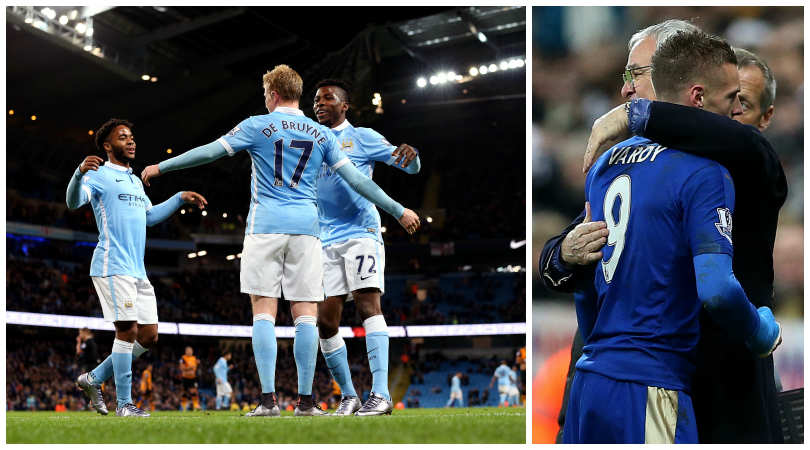
The Manchester City attack this season has been exceptional. At home, they’ve put three past Chelsea, five past Palace and Bournemouth and six past Newcastle. Their attacking pressure is relentless and comes from all directions. What is most striking about City's play is how it fills the opponent’s half. Below is a zonal passing network for City's game against West Ham.
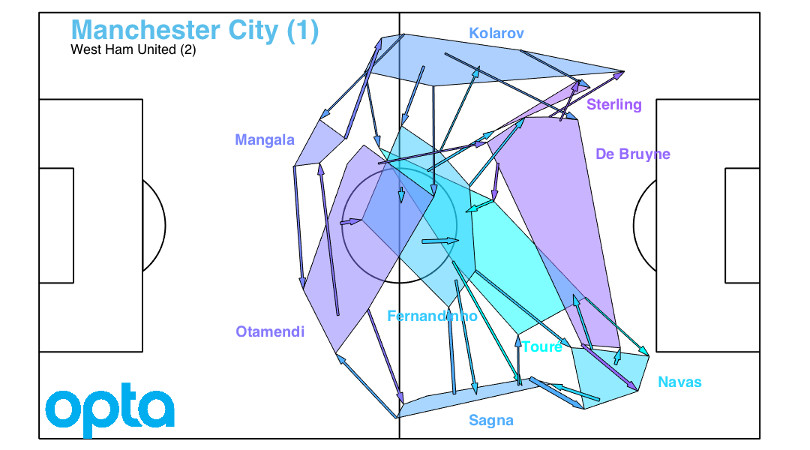
There are lots of arrows here, and that is because there were lots of passes. Each arrow connects a pair of players. So, for example, the arrow pointing from Bacary Sagna to Jesus Navas summarises passes made by Sagna and received by Navas. The starting point of the arrow is the average position that the player was on the field when he passed the ball to the receiver. The tip of the arrow is the average position of the receiver when he successfully controlled the ball. Arrows are only included for players who completed six or more passes between them. So pairs of players who made only a few passes are excluded.
The start and end points of the arrows allow us to define zones for the players. Each zone in the diagram above connects up all of the start and end points of passing arrows for each player. So the shaded areas give an idea of the playing formation of the team.
Controlling the final third
It is De Bruyne who is the attacking play-maker occupying the all-important area in front of goal. We can see from the large zone he occupies that his attacking contribution was key.
We can see the 4-2-3-1 formation adopted by City, but the zones give a better idea of the space the players are using. For example, Aleksandar Kolarov and Sagna both are on the left and right wings respectively. But the size of the zones and the direction of the arrows show that Kolarov made and received more forward, attacking passes, connecting directly to Kevin De Bruyne. Sergio Aguero is missing from the network because he didn’t make or receive more than six passes from any one player. This isn’t unusual for a centre-forward, who should concentrate on scoring instead of playmaking. It is De Bruyne who is the playmaker occupying the all-important area in front of goal. We can see from the large zone he occupies that his contribution was key.

City lost against West Ham, but it wasn’t for lack of attacking ideas. They provided plenty of passing and occupied a large portion of the pitch. To give some idea of exactly how much of the field the City passing network occupies, let’s look at zonal passing networks of other teams playing against West Ham.
Mix of styles
The best features, fun and footballing quizzes, straight to your inbox every week.
We’ll start with Arsenal.

The Gunners also lost at home against West Ham, on the first weekend of the season. This particular zonal network is typical for Arsenal, occupying the area in front of the box. On this occasion their passing was to no avail, but it has paid off for them as the season has progressed.
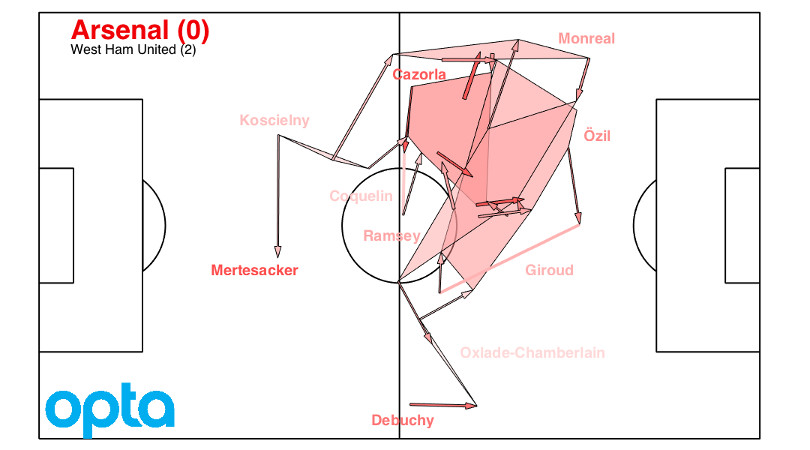
Norwich drew 2-2 at Upton Park. The Canaries had a great deal of ball rotation between the central defenders and midfield, but little link up to the wings and attacking midfield.
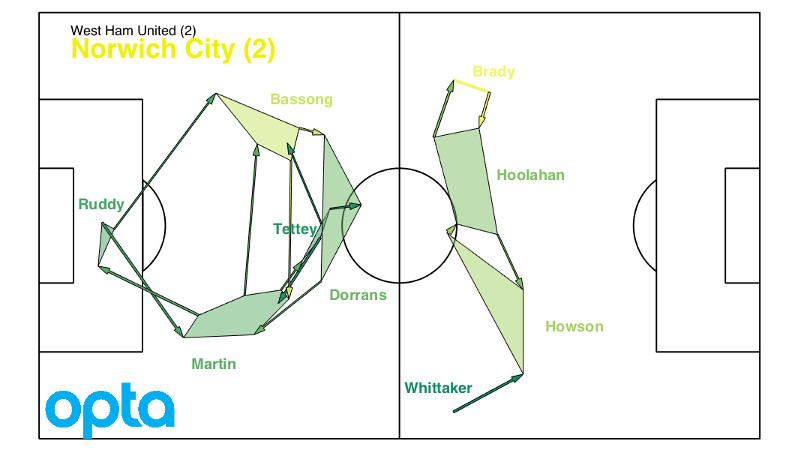
Bournemouth have played very fast football down the wings this season, and this network for their 4-3 win against the Hammers is a good example.

Rapid passing on the wings has been the hallmark of the south coast side's play this season. In this game they managed to connect up well with their centre-forward; Callum Wilson got a hat-trick, with balls fed up to him by Matt Ritchie.
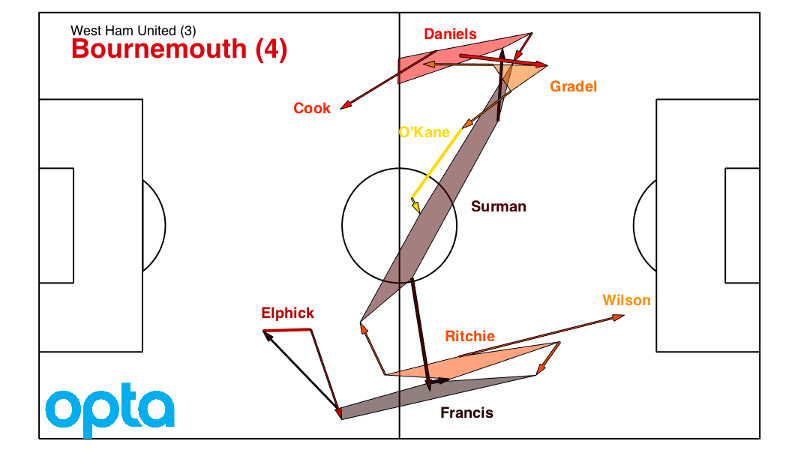
There are only two arrows and no zones in the Leicester zonal network below.

This season, the Foxes have shown that passing the ball around is not a requirement for winning matches. They beat West Ham 2-1 away, despite only two pairs of players completing more than six passes between them.
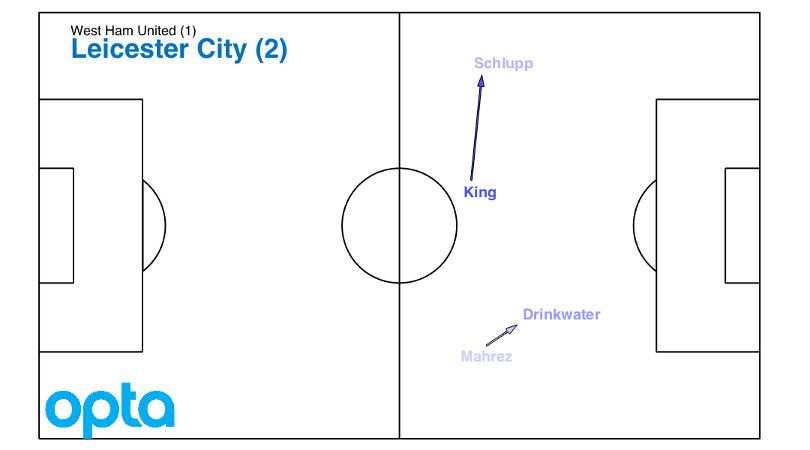
More examples of these networks are posted on the @Soccermatics Twitter feed. So far this season it is primarily Manchester City and Arsenal who have created networks that cover both sides of the opponents' half and regularly pass the ball in front of goal. This is why they remain firm favourites for the title. Leicester have had a remarkable run so far, but they lack a passing structure. This might be mathematical snobbery, but it is hard to see how a team so disconnected can continue to challenge for a top-four place.
RECOMMENDED Revealed: Klopp's transition is more important than the press
